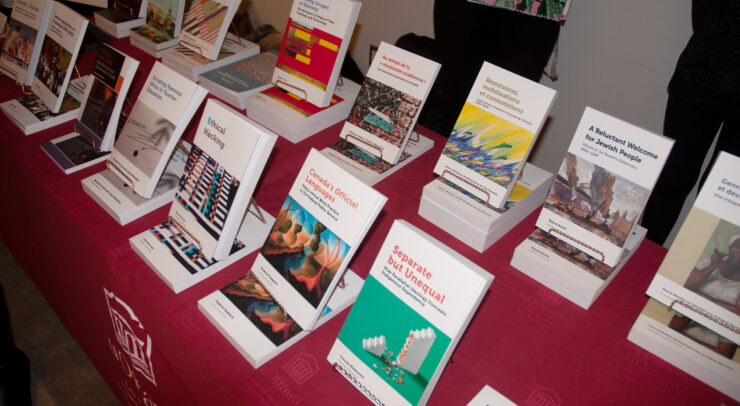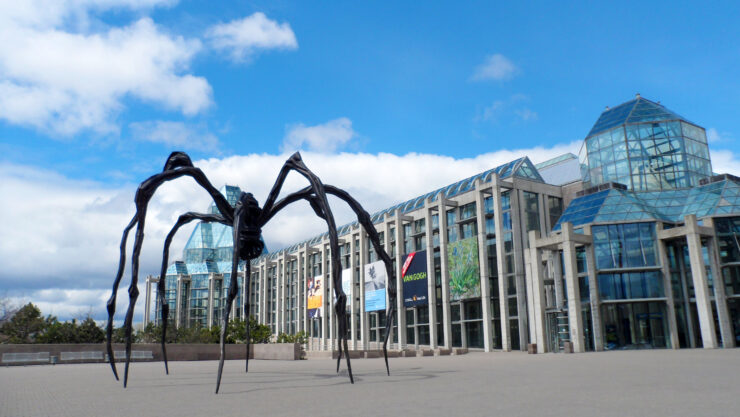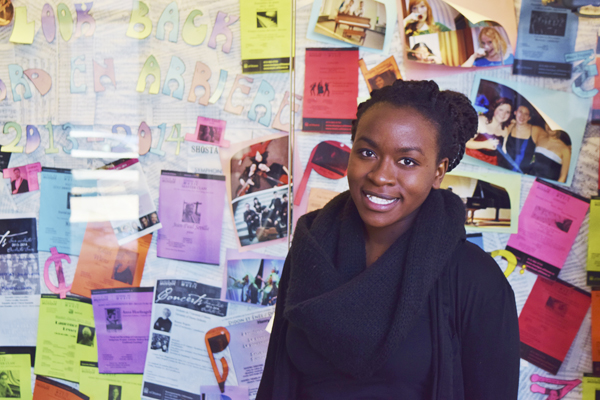In Proximity explores artistic and ethical implications of spectatorship, troubles idea of detached spectator
A new art exhibit opens in the University of Ottawa’s Gallery 115 in the visual arts building on Monday, and it promises to get visitors thinking about their own role as spectators in a gallery.
In Proximity is the capstone project of several students in the curating for contemporary art course, including Caroline Stewart, a fourth-year art history student, and Loren Wang, a fourth-year visual arts and public administration student.
“In Proximity is an exhibition basically exploring the artistic and ethical implications of spectatorship in art,” Stewart said. “We are trying to challenge ideas of a neutral, passive or removed spectator and pushing audiences to question the ways in which their spectatorship is active and implicated in what they are witnessing.”
The curators had been given the theme of “discourse” in their class and had originally wanted to explore relational esthetics before moving to the themes of spectatorship and surveyance.
“I was really inspired by feminist theory, issues of voyeurism and the gaze and the ethical implications of power relationships within the gallery and how those dynamics influence the ways in which people view art,” said Wang. “Curating in the modern era has a different dynamic than how the field was before, it’s a lot more concerned with ethics and diversity.”
Wang and Stewart always kept in mind ways to trouble the idea of the spectator as detached and neutral, leading them to create a space in which viewers are forced to recognize their own place within the gallery.
All the artists on display are connected to the U of O — three are former visual arts students and two are professors. Wang and Stewart said they received a wide array of submissions, most leaning towards forms of photography, installation, and new media.
“There’s a lot of media and photography,” said Wang. “We were kind of looking for that because part of what would make our show special was the variety of new media and how that separated the traditional expectations of what a gallery space might look like.”
In addition to the exhibit itself and the vernissage on Monday, the curators have also planned a zine-making workshop on Wednesday evening led by recent visual arts graduate Emily Neufeld, who will talk about the history of zines and encourage participants to make their own.
They’ve also planned an artist talk on Friday afternoon with exhibitor Mercedes Ventura and professor Andrea Fitzpatrick, who specializes in issues of the gaze.
“It’s open to all. We’re having these events to make it as open and conducive to participation as possible,” said Wang. “It’s part of the interactive aspect.”
“We want to encourage discourse, and one of the best ways to do that was to very literally create spaces in which that was supposed to happen,” Stewart said.
As part of the course, Wang, Stewart and the rest of the team had to plan every detail, from intense research and crafting the perfect call-for-submissions to tiny esthetic points. Wang said the time and effort in the gallery was well worth it as the opening date approaches.
“We’ve worked hard on every aspect of it, from the research behind the work to all the writing that we’ve done, the hours spent on the colour schemes, the fonts and the typesetting, and the fundraising,” said Wang. “I think people will get a lot out of it because it’s meant to engage them and be more democratic.”
The wide variety of art on display is also a selling point for Stewart, who stated that everyone will find something to enjoy in the gallery.
“Because we have so many works that deal with this theme in very different ways, people can come and have their own experience,” added Stewart. “There should be something there for everyone.”
In Proximity runs from Monday to Nov. 29 in Gallery 115 in the visual arts building, with the vernissage on Monday from 6 p.m. to 9 p.m. Admission is free.








